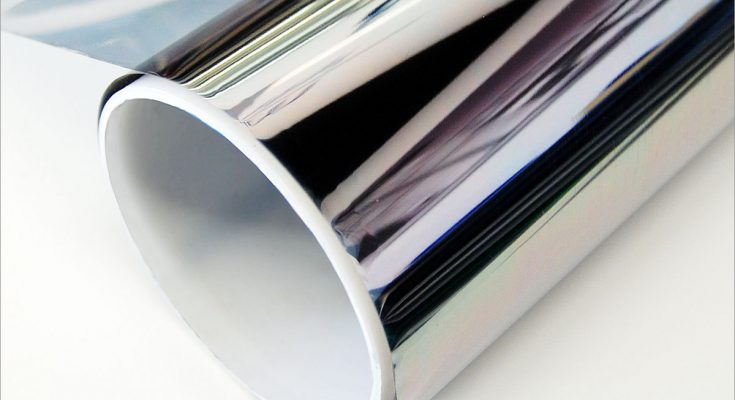Solar control film is a thin laminate or film installed on window glass to reduce heat transfer by reflecting back visible light, infrared and ultraviolet (UV) rays entering through window. They work on the principles of radiation and convection respectively to reduce heat flow. These films are generally metallized (which can be transparent to visible light) or dyed and contain the ability to reject back inbound solar radiation back through the window glass to the exterior environment. The solar control film can reduce the energy transmission by as much as 80%, when compared to regular window film. Hence, it helps in reducing the number of units of electricity consumed by air conditioner to cool down the temperature. Solar control film offers effective solutions in controlling the excessive temperature during the summer.
Solar control film is generally manufactured from polyethylene terephthalate (PET), a thermoplastic resin. They are preferred owing to their excellent strength and optical properties. The PET is used in a form of pellets, which are then melted and stretched biaxial into polyester sheets and transformed in the shapes depending upon its varied applications. These films are used as retrofit application for existing glass on automobiles, residential and commercial buildings. The benefits of using solar control films includes reduced heat loss, minimized fading of furniture or interiors, increased level of privacy by reducing visibility and scratch resistance.
Solar control film works by reflecting infra-red component of solar energy (often 700W/sq M) and absorbing the UV component. Few films are also silvered or tinted to reduce visible light. Solar control film is an extremely cost-effective method for reducing cost incurred in heating and cooling existing buildings by reducing the amount of heat transfer through glazing. Solar control film based on convection principle is mostly used in winter, when the outgoing heat is essential, as temperature difference often causes condensation. Solar control films helps in decreasing heat loss by reflecting up to 35% of heat back in to room.
Solar control film helps in improving energy efficiency. They are also used as safety supplement for glass and offer solution for privacy issues. It is also a contributing factor towards the living and working comfort in building. The films have high resistance for scratches and easy on maintenance. Moreover, these films can be used flexibly across a spectrum of surfaces in different shapes, sizes and colors offering solutions to variety of challenges.
Solar controls films play a vital role in climate change initiatives around the world, as films are a proven energy conservation technology with better environmental sustainability and business benefits. It helps in cost saving that would be achieved from the installation of films in terms of kWh energy reduction, financial savings and projected payback time, as well as carbon emission reduction.
Solar control films are used in various industrial sectors such as marine, residential and commercial buildings, graphics and automotive industry. They offer various solutions, including heat and glare reduction, UV filtration, safety and security, privacy, thermal insulation and decoration and signage.
The increasing infrastructural development is offering potential market opportunities for solar control films. Real estate development in developing countries, such as China, India, Brazil, Malaysia and South Africa, has positively affected the demand for solar control films. Conventionally, real estate sector have relied on solar control window glasses for reducing solar radiations. However, solar control films are replacing solar control window glasses effortlessly. Owing to its multi-purpose applicability such as comparatively low cost, high solar reduction rate, increased safety and security features.
The building construction industry offers growth opportunities for the solar control films market as it uses more glass than ever before, which has further increased the demand for solar control film. Since past few years, there has been an increase in demand for solar control films from construction industry, owing to huge investment and increased infrastructural development in residential and commercial buildings, such as malls, housing societies, corporate parks and office buildings. The countries, such as Malaysia and India, that are located close to equator witness warm humid climate, along with long sun-shine hours and abundant solar radiation throughout the year. Hence, solar control on windows is required to capture the daylight, whereas moderating thermal impact and eradicating glares problem. This is one of the energy efficient strategies to achieve the thermal and visual comfort in buildings.




